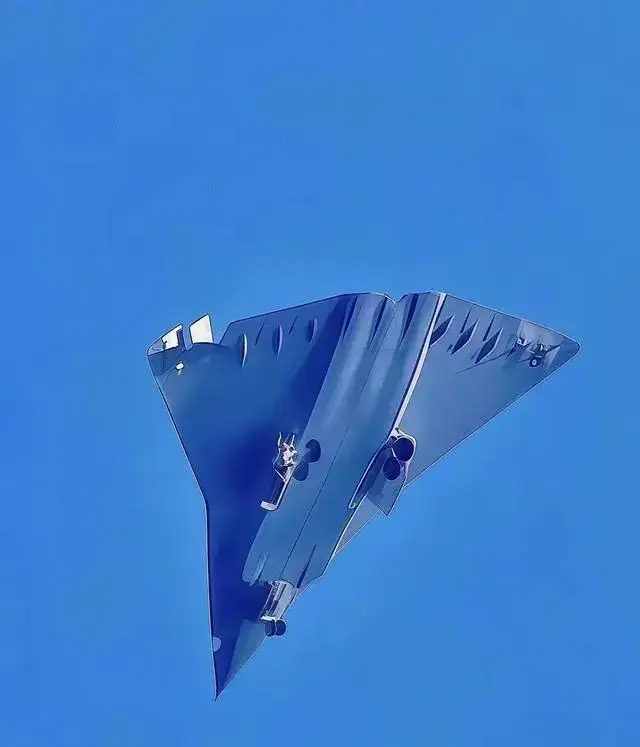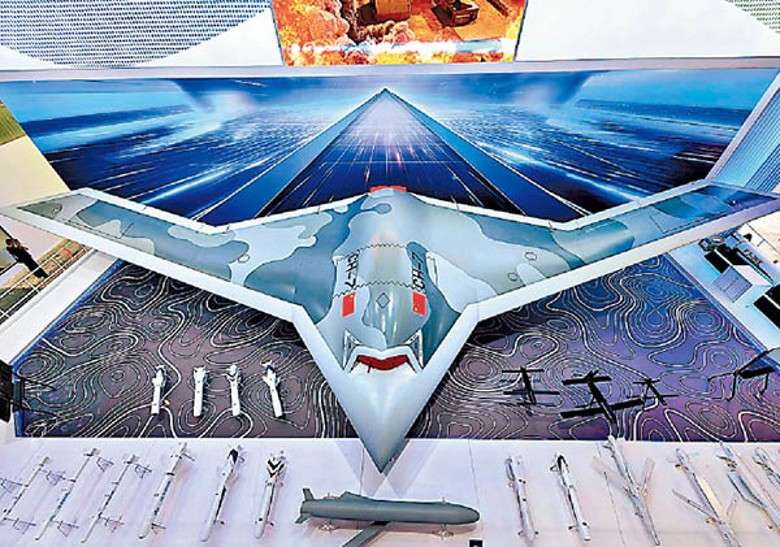On December 26, 2024, accompanied by the J-20 two-seat fighter plane, a sci-fi-style, all-wing-body-fusion, tailless triangle-layout aircraft roared over people’s heads, and it was particularly eye-catching against the backdrop of the blue sky.

As a symbol in traditional Chinese culture, the ginkgo leaf is used on the Internet to metaphorically represent the rumors of a new generation of fighter planes, reflecting the public’s attention to the country’s scientific and technological progress and military development. This symbolic expression combines the good wishes for peace, longevity and auspiciousness in Chinese culture. When the National Defense Times published a photo of a ginkgo leaf with the text “It really looks like a leaf”, this behavior triggered widespread speculation and discussion on the Internet, and many people interpreted it as a hint that China’s new generation of fighter planes will soon be unveiled.
The development and deployment of a new generation of fighter planes is an important manifestation of a country’s military strength and an important factor in the international security landscape. From a technical point of view, a new generation of fighter planes (such as the so-called sixth-generation aircraft) usually have higher stealth performance, supersonic cruise capability, advanced avionics systems, and possible artificial intelligence-assisted combat capabilities. These technological advances not only enhance the country’s own defense capabilities and air superiority, but also have an impact on the global security situation.
However, linking ginkgo leaves with world peace reflects people’s hope that the development of military power will ultimately serve the purpose of maintaining world peace. As some comments have pointed out, a strong national defense force is to ensure national security and social stability, thereby contributing to world peace and development. This view emphasizes the balance between military technology and foreign policy: that is, to promote international mutual understanding and cooperation by enhancing one’s own defense capabilities, rather than causing unnecessary competition or conflict.
Therefore, although the new generation of fighter jets represents the application of cutting-edge technology, the implication behind it should be how to use such power to build a more harmonious world. Just as ginkgo leaves symbolize longevity and tranquility in Chinese culture, the new generation of fighter jets can also become one of the tools to promote peace and stability, depending on how countries use and develop these technologies and what positions and actions they take in global affairs.
As a cultural symbol, ginkgo leaves have become a bridge connecting advanced military technology and beautiful visions in this incident, expressing the Chinese people’s beautiful expectations that scientific and technological progress will serve the common well-being of mankind. While pursuing technological innovation, we should not forget the importance of maintaining peace and promoting international cooperation.
Next, TST CABLES will show you the application of top fighter cables Military Cable.
The customization of fighter cables is a highly specialized and technology-intensive job, involving multiple key areas such as avionics equipment, weapon systems, and communication systems. In order to ensure that fighter cables can meet strict performance requirements and environmental adaptability, the following are some key considerations and steps for the customization of fighter cables:

1. Demand Analysis
Performance requirements: Determine the temperature range, vibration level, electromagnetic interference (EMI) protection level, etc. that the cable needs to withstand.
Physical properties: Define the minimum bending radius, weight limit, and size specifications of the cable based on installation space limitations.
Electrical parameters: Clarify electrical properties such as voltage level, current carrying capacity, and signal transmission rate.
2. Material selection
Conductor material: High-purity copper or silver-plated copper wire is usually used to ensure good conductivity and corrosion resistance.
Insulation material: Use materials that are resistant to high temperature, oil, and wear, and have good dielectric strength, such as polytetrafluoroethylene (PTFE), fluororubber (FKM), etc.
Sheath material: Choose outer sheath materials with fireproof, waterproof and chemical corrosion resistance, such as special PVC, thermoplastic elastomer (TPE) or polyurethane (PU).

3. Design and manufacturing
Shielding design: For sensitive signal cables, metal braid or aluminum foil shielding must be added to reduce the impact of electromagnetic interference.
Armor protection: In some cases, it may be necessary to add steel wire or steel tape armor to enhance mechanical protection.
Terminal connector: Select aviation-grade connectors that meet MIL-SPEC standards to ensure reliable electrical contact and environmental sealing.
4. Testing and verification
Environmental testing: Simulate extreme temperature, humidity, vibration and other factors under actual flight conditions, and conduct aging tests, impact tests, etc.
Electrical testing: Including withstand voltage test, insulation resistance test, conduction test, etc., to ensure that the electrical performance of the cable meets the standards.
Reliability evaluation: Evaluate the long-term reliability of the cable through accelerated life testing and other methods.
5. Certification and Compliance
Military Standards: Ensure that all products comply with relevant international and national standards, such as MIL-DTL-83486, MIL-DTL-22759, etc.
Quality Management System: Implement ISO 9001 or other applicable quality management systems to ensure consistency and traceability of the production process.
6. Logistics and Support
Quick Response Mechanism: Establish an efficient supply chain management and inventory control system to ensure timely delivery of required parts.
After-sales Service: Provide technical consultation, maintenance services and spare parts supply to ensure that users can get full support throughout the life cycle.
7. Innovation and Development
Application of New Materials: Continuously explore cutting-edge technologies such as new composite materials and nanomaterials to improve the comprehensive performance of cables.
Intelligent Manufacturing: Introduce automated production lines and intelligent testing equipment to improve production efficiency and product quality.
Specific examples of customized cables for fighter jets

For example, when customizing cables for fifth-generation fighter jets, cable manufacturer TST CABLES may pay special attention to the following aspects:
Lightweight design: Reducing the overall weight without sacrificing strength and durability helps improve the fuel efficiency and maneuverability of the aircraft.
High temperature adaptability: Since the temperature near the engine is extremely high, the cable needs to have excellent heat resistance.
Stealth compatibility: Considering the requirements of modern fighter jets for radar cross section (RCS), the design of the cable should minimize the impact on stealth performance.
In short, the customization of fighter jet cables is a complex process involving multidisciplinary knowledge and technology. It not only requires a high degree of professional skills, but also requires close coordination with customer needs and the latest military specifications. If you have more specific needs or application scenarios, please provide more details and TST CABLES will provide you with more targeted suggestions.
Also available in:
Arabic
English
Japanese
Russian
Spanish
Portuguese (Brazil)




